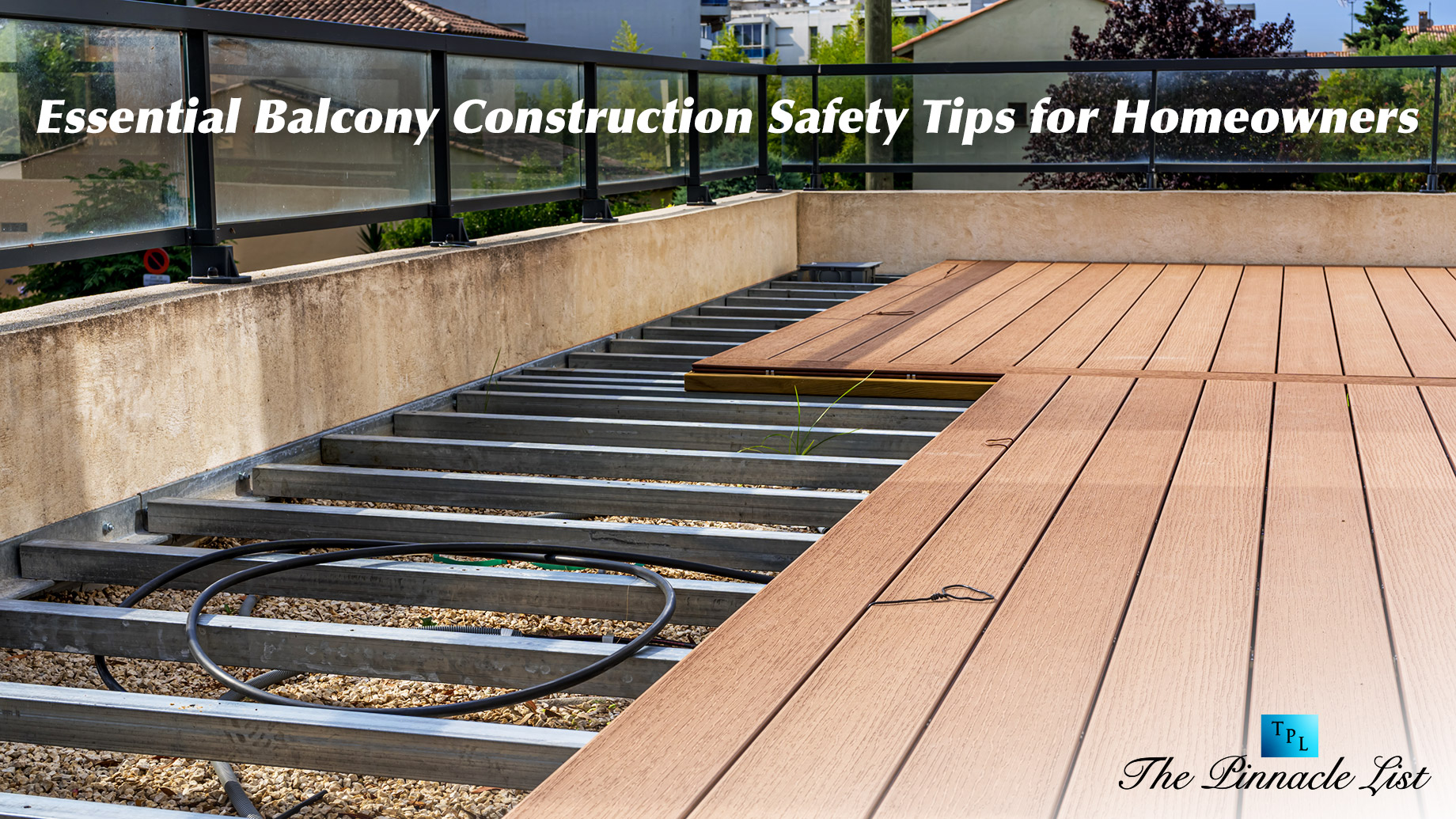
Adding a balcony to your home can enhance outdoor living space and boost property value. However, balcony construction involves significant safety risks if not executed properly. From structural integrity to material selection, every detail matters. This guide outlines essential balcony construction safety tips to ensure your project is secure, compliant, and built to last.
1. Research and Planning: Lay the Foundation for Safety
Before breaking ground, thorough research and planning are critical.
- Understand Local Building Codes: Building codes vary by region and dictate requirements for railings, load capacity, and materials. In California, SB721 and SB326 require routine balcony inspections for multi-unit buildings to prevent structural failures. Non-compliance can lead to fines or unsafe structures. Contact your local building department for specifics.
- Obtain Necessary Permits: Permits ensure your design meets safety standards. Skipping this step risks legal issues and potential hazards. A licensed contractor familiar with SB721 and SB326 can help navigate the process.
- Hire Reputable Professionals: Unless you’re an experienced builder, hire a licensed contractor. Verify credentials, insurance, and past projects. Professionals bring expertise in design, materials, and code compliance, ensuring your balcony meets inspection requirements and long-term safety standards.
2. Choose Durable, Weather-Resistant Materials
Materials determine your balcony’s longevity and safety. Prioritize quality and climate suitability.
- Decking Options: Opt for rot-resistant wood (e.g., cedar, redwood), composite decking, or concrete. Avoid untreated wood in humid climates.
- Corrosion-Resistant Fasteners: Use stainless steel or galvanized screws and bolts to prevent rust, which weakens structural connections.
- Weatherproofing: Apply sealants to wood and choose waterproof membranes for concrete balconies to prevent water damage.
3. Ensure Structural Integrity
A balcony’s strength lies in its support system.
- Foundation and Footings: Footings must extend below the frost line in cold climates to prevent shifting. Concrete piers or helical piles offer stability.
- Support Beams and Joists: Use pressure-treated lumber or steel beams spaced appropriately to handle weight. Consult an engineer for load calculations.
- Weight Capacity: Design for at least 50 pounds per square foot (PSF) to accommodate people, furniture, and planters. Factor in dynamic loads (e.g., gatherings).
4. Install Safety Features: Railings and Slip Resistance
Prevent falls and accidents with smart design choices.
- Code-Compliant Railings:
- Height: Most codes require 36–42 inches.
- Baluster Spacing: Gaps should be under 4 inches to prevent children or pets from slipping through.
- Sturdy Materials: Metal, tempered glass, or thick wood resist force and weathering.
- Slip-Resistant Flooring: Choose textured surfaces, composite boards with grip, or non-slip coatings. Avoid smooth tiles in wet climates.
5. Schedule Regular Inspections and Maintenance
Safety doesn’t end at construction—ongoing care is vital.
- Annual Inspections: Check for cracks, loose railings, rust, or rot. Pay attention to connections between the balcony and house.
- Prompt Repairs: Address issues like wobbly railings or splintered wood immediately.
- Clean Surfaces: Remove debris and mold to prevent slips and deterioration.
6. Avoid Common Balcony Construction Mistakes
Steer clear of these pitfalls:
- DIY Overconfidence: Complex structural work requires expertise. Mistakes in joist spacing or footings can lead to collapse.
- Ignoring Weight Limits: Overloading with heavy planters or hot tubs strains supports.
- Cutting Corners on Materials: Cheap fasteners or untreated wood save money upfront but compromise safety.
- Skipping Permits: Unpermitted projects may fail inspections or complicate home sales.
Conclusion: Prioritize Safety for Peace of Mind
A well-constructed balcony is an asset, but safety must always come first. By adhering to building codes—including SB721 and SB326, which mandate regular balcony inspection—investing in quality materials, and working with professionals, you’ll create a space that’s both beautiful and secure. Regular maintenance and inspections ensure longevity, protecting your family and investment. Remember: Cutting corners during construction can lead to costly—or even dangerous—consequences. When in doubt, consult an engineer or contractor to keep your project on track.
By following these balcony construction safety tips, you’ll enjoy your elevated oasis with confidence for years to come.